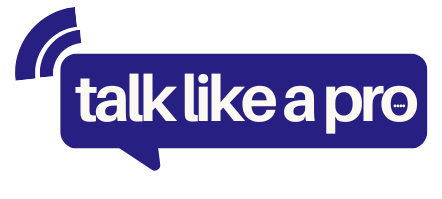Alright, let’s address the elephant in the room. What do you do when someone drops an inappropriate comment that makes you want to either vanish into thin air or punch a wall? We’ve all been there, right?
Maybe it’s that uncle at family gatherings with zero filter, or the coworker who thinks they’re hilarious but really, just no. This blog is for you, my friend! We’re diving into how to handle these cringe-worthy moments with style, wit, and grace. Shall we get started?
Assessing Your Audience and Situations
Let’s be real for a second: not all inappropriate comments require the same response. The comment from your well-meaning but clueless grandma is going to be a different ball game compared to a sleazy remark from Brad at the office who needs to learn about personal boundaries.
Understanding context is key. Who you’re talking to, where you are, and how significant the inappropriate remark is can heavily influence how you respond. Now, let’s break down some effective strategies.
Type of Response 1: The Classic “Wait… What?” comeback
“Can you repeat that?”
This type of response works wonders because it puts the spotlight back on them. More often than not, the person will realize just how gauche their comment was when asked to repeat it. This offers them a chance to correct themselves or at least feel a bit of the cringe.
Example Replies:
- “I’m sorry, I must have misunderstood. Could you say that again?”
- “Did you really just say what I think you said?”
- “Excuse me, but could you clarify what you just said?”
- “Hold on, did I hear you correctly?”
- “Please repeat that, I’m not sure I caught it.”
- “Wow, I must have misheard. Can you say that again?”
- “Are you sure you want to stick with that comment?”
- “Come again? That didn’t seem right.”
- “Did you mean to say that aloud?”
- “Wait, what?!”
Type of Response 2: The Sarcastic Winner
“Wow, that was inappropriate.”
Sarcasm can be your best friend here. This approach adds a layer of humor to your response, making it clear that you found the comment off-key without causing a full-blown argument. Just be careful—sarcasm can sometimes fly over people’s heads, leaving them more bewildered than enlightened.
Example Replies:
- “Oh, that was classy.”
- “Wow, tell me more—on second thought, please don’t.”
- “Aren’t you a charmer?”
- “Classic. Just classic.”
- “Ah, a master at inappropriate comments, I see.”
- “And the award for tactlessness goes to…”
- “Nice try, that’s not happening again.”
- “Wow, you sure know how to make things awkward.”
- “Right, because that’s what everyone here wanted to hear.”
- “Bravo, you just made it weird.”
Type of Response 3: The Direct Approach
“That comment is really not okay.”
Sometimes, directness is the best policy. Especially in professional settings, it’s often important to be crystal clear about why the comment was out of line. This way, there’s no room for misinterpretation.
Example Replies:
- “That’s not appropriate, please don’t say things like that.”
- “I find that really inappropriate.”
- “That wasn’t funny or appropriate.”
- “That’s crossing a line.”
- “I don’t think that’s an okay thing to say.”
- “We don’t tolerate that kind of remark here.”
- “That statement makes me uncomfortable.”
- “I’m going to have to ask you not to say things like that.”
- “That’s not acceptable.”
- “Please refrain from saying that in the future.”
Type of Response 4: The Playfully Confused
“Wait, what era are we in again?”
A playful yet pointed question can make the other person reflect on their outdated or inappropriate thinking. This is best used when you want to keep the mood light but still make a point.
Example Replies:
- “What year do you think it is?”
- “Did you just come from the 1950s?”
- “Wow, haven’t heard that one since elementary school.”
- “Are we still using phrases like that?”
- “I didn’t know people still said that.”
- “Was that an attempt to time-travel backwards?”
- “Buddy, it’s 2023, not 1923.”
- “What decade are you channeling right now?”
- “Are those views on loan from the past?”
- “Hmm, time to update your vocabulary!”
Type of Response 5: The Diplomatic Deflection
“Let’s steer the conversation to something more appropriate.”
This tactic works well in professional settings or mixed company. You’re not ignoring the comment—you’re redirecting. This way, you can gracefully guide the conversation back on track.
Example Replies:
- “How about we change the topic?”
- “Let’s keep it professional here.”
- “Maybe we should talk about something else.”
- “I think this is a good time to move on.”
- “Let’s focus on the task at hand.”
- “Perhaps another topic would be better.”
- “Let’s steer away from that kind of talk.”
- “Can we switch gears here?”
- “Let’s get back to what we were discussing.”
- “How about we chat about something else?”
Type of Response 6: The Smart Comeback
“Wow, I didn’t know we were telling inappropriate jokes today.”
A smart comeback can put the commenter in their place without a full-blown confrontation. This is suitable for social settings where a direct reproach might kill the vibe, but you still want to address the issue.
Example Replies:
- “Is this open mic night for bad jokes?”
- “Did you miss the memo on appropriateness?”
- “Oh, we’re doing inappropriate humor now?”
- “You really went there, huh?”
- “Pro tip: leave those comments at home.”
- “Wow, setting the bar real low.”
- “Guess the inappropriate comment quota is filled.”
- “Not sure that’s the kind of joke we needed.”
- “That one should have stayed in your head.”
- “Memo to self: Avoid that kind of humor.”
Type of Response 7: The Cool, Calm, and Collected
“I don’t think that’s an okay thing to say.”
Calm and collected responses convey confidence and authority. You’re asserting that the behavior is unacceptable without raising your voice or getting flustered. Ideal for maintaining your composure in tricky situations.
Example Replies:
- “That’s inappropriate and uncalled for.”
- “We don’t tolerate those kinds of comments.”
- “Let’s avoid comments like that, please.”
- “I’m uncomfortable with that statement.”
- “Let’s keep the conversation respectful.”
- “That’s not something we should joke about.”
- “I’d prefer we avoided this topic.”
- “Let’s not go there.”
- “Such comments are not acceptable here.”
- “Please refrain from saying that.”
Type of Response 8: The Educational Moment
“Comments like that can be really harmful.”
Sometimes people genuinely don’t realize the impact of their words. Offering an educational perspective can create awareness and encourage better behavior in the future.
Example Replies:
- “That comment can make people feel very uncomfortable.”
- “Such remarks can be quite hurtful.”
- “Let’s be mindful of how our words affect others.”
- “That kind of language can perpetuate harmful stereotypes.”
- “It’s important to speak respectfully to everyone.”
- “Such statements can have negative impacts.”
- “Let’s choose our words more carefully.”
- “Words have power, let’s use them wisely.”
- “Think about how that statement might affect someone.”
- “We should all strive to communicate respectfully.”
Type of Response 9: The Humor Deflector
“Wow, that was… something.”
Sometimes, the best way to defuse a situation is through humor. Adding a bit of levity can signal that the comment was inappropriate while keeping the atmosphere light-hearted.
Example Replies:
- “Well, that was… different.”
- “Not sure where you were going with that.”
- “You really went for the jugular, huh?”
- “That’s one way to kill the mood.”
- “Well, that was awkward.”
- “Trying to make things weird, are we?”
- “You know, that’s not what I expected to hear.”
- “Fancy baiting the awkward zones, do we?”
- “That’s… interesting.”
- “Did you really just say that?”
Type of Response 10: The Silent Stare
Just look at them and blink slowly.
Sometimes, the absence of words is more powerful than any comeback. The slow blink or silent stare can communicate your disbelief and discomfort without you saying anything. Perfect for those moments when words fail you.
Example Replies:
- Awkward silence, maintaining eye contact.
- Slow blink, look around room, back at them.
- One eyebrow raised.
- Mouth slightly open in shock.
- Look away, then back without saying a word.
- Tilt head skeptically.
- Tapping fingers on the table.
- Slow head shake in disbelief.
- Look around at others in the room for backup.
- Simply walk away.
How to Reply to a Girl
When replying to a girl who has faced an inappropriate comment, you’re not just standing up against a single instance; you’re addressing a larger, often deeply ingrained societal issue. Your response should be supportive and protective without further escalating the situation. Remember, the goal is to create a safer environment and ensure she feels backed up and respected. Using empathy and understanding is absolutely key here. Make it clear that her feelings are valid, and she’s not overreacting. This isn’t the time for humor or sarcasm; keep it straightforward and supportive.
Example Replies:
- “That was completely out of line, I’m so sorry you had to hear that.”
- “You shouldn’t have to put up with comments like that.”
- “Are you okay? Do you want to talk about it?”
- “That’s not acceptable. Let’s address this properly.”
- “Nobody should speak to you that way.”
- “You deserve respect and that was far from it.”
- “We need to report this behavior.”
- “I’m here for you. Let’s figure out what to do about this.”
- “That was completely uncalled for.”
- “Please don’t let that get to you. That’s on them, not you.”
How to Reply to a Guy
When a guy is on the receiving end of an inappropriate comment, the dynamics might vary, but the need for addressing the issue remains the same. Sometimes, men face belittling remarks or toxic masculinity-driven comments. Your response should be strong and clear, without diving into an aggressive confrontation. Show respect and camaraderie while making it clear that the comment wasn’t okay. Use a tone that communicates solidarity; you’re standing with them, not against them.
Example Replies:
- “That’s not cool, man.”
- “We don’t talk like that here.”
- “You good? That was out of line.”
- “Let’s respect each other, okay?”
- “We should avoid making such comments.”
- “That was unnecessary.”
- “We’re better than that.”
- “Such comments aren’t welcome.”
- “We need to show more respect.”
- “That wasn’t appropriate to say.”
Dealing with Inappropriate Comments at Work
Workplace etiquette can be a jungle. When inappropriate comments come into play at work, you often need to balance professionalism with calling out the behavior.
In professional settings, inappropriate comments are a ticking time bomb. They can undermine respect, create discomfort, and even open the door to legal issues. If your coworker or boss makes an inappropriate comment, first, assess the gravity.
Is it a one-off awkward moment, or is it something more systemic? For minor slip-ups, a simple redirect or polite correction can work wonders. However, for more serious or repeated offenses, documenting the incidents and escalating them to HR is essential.
Key Points:
– Voice Your Discomfort: Sometimes a direct approach is needed.
– Redirect the Conversation: Steer back to the task at hand.
– Escalate: Don’t hesitate to escalate to HR or management if necessary.
– Document: Keep a record of the inappropriate remarks for any future references.
Handling Colleague Comments:
– “Let’s keep the conversation professional.”
– “That’s not appropriate for the workplace.”
– “I don’t think that comment was necessary.”
Handling Boss/Manager Comments:
– “I feel uncomfortable with that remark.”
– “Could we keep the conversation focused on work?”
– “Let’s be mindful of how we speak to each other.”
How to Handle Inappropriate Comments on Social Media
Social media brings its own unique challenges. Online interactions lack physical cues and can often escalate quickly. Here’s how to keep your cool and respond effectively.
Ah, social media—the Wild West of interpersonal communication. Everyone’s a keyboard warrior, and boundaries seem non-existent. When you come across an inappropriate comment online, your response depends entirely on the platform and your relationship with the person. Is it a public forum or a private message? For public comments, a quick, firm rebuttal can shut down the negativity while showing your followers where you stand. For private messages, however, you have the option to block, report, or directly call out the user’s behavior.
Key Points:
– Report and Block: Use platform tools to report and block offensive users.
– Publicly Address: If appropriate, respond in a manner that addresses the inappropriateness without fueling the fire.
– Private Call-Out: For personal connections, a private message addressing the issue can sometimes work best.
Example Public Replies:
– “That’s not an acceptable thing to say anywhere.”
– “Comments like that are harmful and unnecessary.”
– “Please refrain from making inappropriate remarks.”
Example Private Replies:
– “That message was inappropriate and unwelcome.”
– “I’d appreciate if you could keep the conversation respectful.”
– “Please do not send messages like that again.”
Responding to Inappropriate Comments from Family Members
Handling inappropriate comments from family is a unique challenge because these are people you love or at least have to tolerate at Thanksgiving. The trick here is to strike a balance between maintaining family peace and not letting them off the hook. For the well-meaning but clueless family members, gentle redirection and education can work wonders. However, for those who insist on being as offensive as possible, you might need to be more direct to make your point clear. And remember, sometimes, it’s okay to walk away for your peace of mind.
Key Points:
– Maintain Calm: Keep your cool to avoid family drama.
– Educate: Sometimes, they just don’t know better.
– Firm Boundaries: Set clear boundaries when necessary.
– Humor: Humor can defuse but also highlight the inappropriateness.
Example Responses:
– “That’s a bit outdated, Grandma.”
– “Let’s keep the conversation respectful.”
– “We don’t use that kind of language anymore.”
– “Okay, let’s talk about something else.”
– “I’m uncomfortable with that topic, let’s move on.”
Things to Keep in Mind
When dealing with inappropriate comments, there’s no one-size-fits-all solution. Your response will depend on the context, the relationship with the individual, and how the comment affects you. However, the key takeaway here is to remain assertive and clear about why the comment was inappropriate.
Don’t let it slide just because it’s uncomfortable. The right response can educate, deter future incidents, and establish a more respectful interaction moving forward. Remember, your comfort and respect come first, and addressing inappropriateness is a step towards a more understanding and respectful world. So go out there and handle those awkward moments like the communication pro you are!



